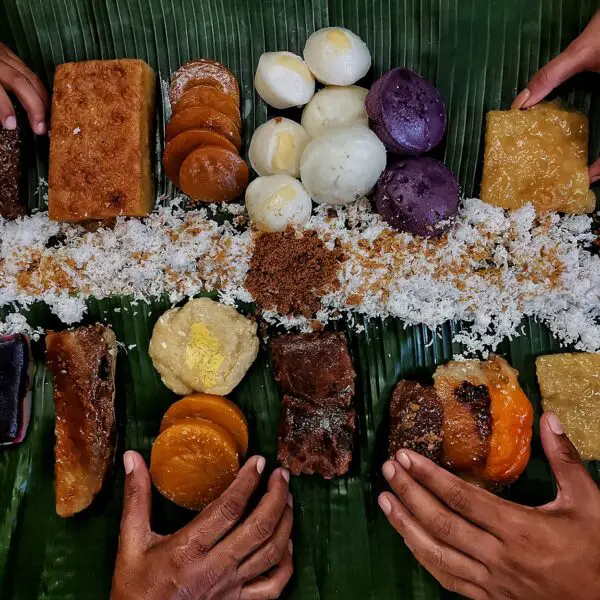Introduction:
Kakanin, the delightful array of traditional Filipino desserts, embodies the artistry of using sticky rice, coconut milk, and sugar to create exquisite treats. Derived from the Tagalog word “kanin,” meaning rice, kakanin showcases the ingenuity and mastery of Filipino culinary heritage. These desserts have a rich history dating back to pre-colonial times when Filipinos harnessed their resources to craft mouthwatering delicacies.
Within this tropical paradise, where rice abounds, Filipino ancestors discovered the alchemy of transforming it into delectable creations by harmonizing it with coconut milk and sugar. These simple yet ingenious recipes have withstood the test of time, captivating both locals and visitors with their flavors.
Kakanin holds a cultural significance that resonates throughout Filipino cuisine. It symbolizes tradition, celebration, and togetherness. Whether enjoyed during festive occasions such as fiestas and weddings or as a daily merienda (snack) at home or in vibrant markets, kakanin brings people closer.
Every region in the Philippines presents its own unique variations of kakanin, showcasing the diverse flavors found across our archipelago. It serves as a remarkable showcase of our cultural diversity united by our shared love for food.
Kakanin transcends social boundaries, welcoming everyone—farmers, city dwellers, and connoisseurs alike—to savor its comforting and delightful sweetness. It’s not just the taste that makes kakanin special; it’s the memories and traditions associated with it.
The process of making kakanin often becomes a communal affair, with families and neighbors gathering to prepare and share in the sweet rewards. It becomes a time for storytelling, laughter, and the passing down of treasured family recipes from one generation to the next.
Essential Ingredients and Tools for Crafting Kakanin
Foundational Ingredients for Kakanin Recipes
When it comes to creating kakanin, several core ingredients appear in most recipes. Rice flour serves as the fundamental building block for many kakanin treats, providing the desired texture and consistency.
Coconut milk adds a luxurious richness and a delightful tropical essence to these desserts. Sugar, whether white or brown, contributes sweetness and depth of flavor. And for a unique twist, recipes may call for ube (purple yam) or pandan leaves to infuse vibrant colors and distinct tastes.
Toppings like grated coconut or salted egg elevate both the flavor and presentation of these indulgent treats. Whether crafting puto or biko, these essential ingredients will ensure your kakanin creations are truly mouthwatering.
Essential Tools for Preparing Kakanin
To bring your kakanin recipes to life, equipping your kitchen with a few essential tools is essential. A reliable steamer takes center stage, as delicate treats like puto and bibingka require gentle heat to achieve perfection. Ensure you have a sturdy pot with a well-fitted lid and a steaming rack or tray that snugly fits inside.
For mixing batters and doughs, a trustworthy whisk or wooden spoon will effortlessly blend the ingredients. Measuring cups and spoons become invaluable in maintaining precise measurements, guaranteeing consistent results.
Let’s not forget about molds! Different kakanin varieties demand specific molds—small round ones for puto and large rectangular ones for bibingka—ensuring their distinctive shapes are achieved.
With these fundamental tools at your disposal, you’ll be well-prepared to embark on your kakanin-making adventure with confidence and finesse!
Easy-to-Make Kakanin Recipes
Puto (Steamed Rice Cakes)
Sublime Simplicity Meets Delicate Flavors Let’s kick off our kakanin adventure with the beloved puto, a delightfully light and fluffy steamed rice cake that can be enjoyed on its own or paired with savory dishes. The traditional white puto recipe involves combining rice flour, sugar, and water to create a smooth batter.
This mixture is then poured into small cupcake molds and steamed until it reaches the perfect tenderness. However, to tantalize your taste buds even further, consider trying some enticing variations such as cheese puto, where grated cheese is added to the batter for a savory twist; ube puto, which incorporates purple yam for a vibrant hue and subtle earthy flavor; or pandan puto, where pandan extract infuses delightful fragrance into these bite-sized treats.
Ingredients:
- 2 cups rice flour
- 1 cup sugar
- 2 tablespoons baking powder
- 1 3/4 cups water
- Grated cheese (optional)
Instructions:
- In a mixing bowl, combine rice flour, sugar, and baking powder.
- Gradually add water while stirring until you achieve a smooth batter.
- Fill each puto mold about 3/4 full with the batter.
- Steam the molds over medium heat for about 15-20 minutes or until the puto is cooked and becomes fluffy.
- Remove from the steamer and let it cool slightly before removing the puto from the molds.
- Serve plain or sprinkle grated cheese on top for added flavor.
Bibingka (Rice Cake)
Traditional Charm with a Dash of Modernity Next up on our kakanin journey is bibingka, a classic Filipino rice cake that brings warmth and comfort to any occasion. The traditional bibingka recipe features a mixture of rice flour and coconut milk baked in banana leaves-lined molds until golden brown.
It is then topped with generous slices of salted egg and smothered in melted cheese for an irresistible combination of sweet and salty flavors. But why not elevate this delightful treat by experimenting with a modern twist?
Indulge your senses in the decadence of chocolate bibingka drizzled with luscious coconut cream frosting. This fusion of flavors will surely leave you craving more.
Ingredients:
- 2 cups rice flour
- 1 cup all-purpose flour
- 1 1/2 cups sugar
- 1 tablespoon baking powder
- 1/2 teaspoon salt
- 1 1/2 cups coconut milk
- 1/2 cup water
- 3 eggs
- Salted eggs, sliced
- Grated cheese
- Butter (for brushing)
- Banana leaves (optional for lining the pan)
Instructions:
- Preheat the oven to 350°F (180°C).
- In a mixing bowl, combine rice flour, all-purpose flour, sugar, baking powder, and salt.
- In a separate bowl, whisk together coconut milk, water, and eggs.
- Gradually add the wet mixture to the dry ingredients while whisking until well combined.
- If using, line a baking pan with banana leaves and brush with butter.
- Pour the batter into the prepared pan and smooth the surface.
- Top with salted egg slices and grated cheese.
- Bake in the preheated oven for about 30-35 minutes or until the bibingka is cooked and turns golden brown.
- Remove from the oven and let it cool slightly before serving.
Sapin-sapin (Layered Sticky Rice Cake)
Layers Upon Layers of Delight Prepare to be captivated by the exquisite beauty of sapin-sapin, a visually stunning layered sticky rice cake that is as delightful to eat as it is to behold. The traditional sapin-sapin recipe involves creating layers of different colors and flavors using glutinous rice flour, coconut milk, and sugar.
Each layer is cooked separately before being carefully stacked on top of the other, resulting in a harmonious blend of textures and tastes. To add even more vibrancy to this treat, try incorporating a pandan-flavored layer for an invigorating twist or a purple yam layer that showcases the natural beauty of this delectable dessert.
Ingredients:
- 1 cup glutinous rice flour
- 1 cup rice flour
- 1 cup sugar
- 2 cups coconut milk
- 1/2 cup water
- Ube flavoring or pandan extract (optional)
- Food coloring (optional)
- Grated coconut, for topping
Instructions:
- In a mixing bowl, combine glutinous rice flour, rice flour, sugar, coconut milk, and water. Mix until well combined and smooth.
- Divide the batter into equal portions, depending on how many layers and flavors you want to make.
- For each portion, add ube flavoring or pandan extract and food coloring (if desired) to create different-colored layers.
- Prepare a steamer and place it over medium heat.
- Grease a baking dish or rectangular pan with oil.
- Pour the first layer of the batter into the prepared dish and steam for about 10-15 minutes or until set.
- Repeat the process for each layer, steaming one layer at a time until all layers are cooked.
- Let the sapin-sapin cool completely before cutting it into squares or diamonds.
- Serve with grated coconut on top.
Kutsinta (Brown Rice Cake)
A Chewy Delight with Unexpected Twists Kutsinta, with its distinctive chewy texture and earthy sweetness, holds a special place in every Filipino’s heart.
The traditional kutsinta recipe calls for brown rice flour combined with lye water to achieve that sought-after chewiness. These bite-sized morsels are then steamed until perfectly cooked.
However, if you’re feeling adventurous, give chocolate kutsinta a try. Infused with cocoa powder and topped with grated coconut for added texture and flavor, this unique variation will take your taste buds on an extraordinary journey.
Ingredients:
- 1 cup rice flour
- 1/2 cup all-purpose flour
- 1 1/2 cups brown sugar
- 2 1/4 cups water
- 1 teaspoon lye water (or substitute with baking powder)
- Grated coconut, for topping
Instructions:
- In a mixing bowl, combine rice flour, all-purpose flour, brown sugar, and water. Mix until well combined and sugar is dissolved.
- Add lye water to the mixture and stir until incorporated.
- Pour the batter into individual kutsinta molds, filling each about 3/4 full.
- Steam the molds over medium heat for about 30-40 minutes or until the kutsinta is set and becomes firm to the touch.
- Remove from the steamer and let them cool slightly before removing the kutsinta from the molds.
- Serve with grated coconut on top.
Biko (Sticky Rice Cake)
Indulge in Time-Honored Comfort Biko is the epitome of comfort food—a sticky rice cake sweetened with brown sugar and topped with caramelized coconut curds known as latik.
The classic biko recipe captures the essence of Filipino cuisine by combining glutinous rice soaked in coconut milk while slowly simmering until fully cooked. For those seeking an extra burst of flavor, consider trying langka biko—biko infused with jackfruit bits adding a tropical twist; or latik biko where toasted coconut curds lend additional aroma to this already divine dessert.
Ingredients:
- 2 cups glutinous rice
- 2 cups coconut milk
- 2 cups water
- 1 1/2 cups brown sugar
- 1/2 teaspoon salt
- Banana leaves (optional for lining the pan)
- Grated coconut, for topping
- Latik (coconut curds), for topping
Instructions:
- Wash the glutinous rice and drain it well.
- In a large pot, combine the glutinous rice, coconut milk, water, brown sugar, and salt. Stir until well combined.
- Cook the mixture over medium heat, stirring constantly, until the rice is cooked and the mixture becomes thick and sticky.
- While the rice is cooking, prepare a baking dish or pan by lining it with banana leaves, if using.
- Transfer the cooked rice mixture into the prepared pan and flatten it using a spatula.
- Sprinkle grated coconut and latik on top.
- Serve at room temperature or chilled.
Maja Blanca (Coconut Pudding)
Creamy, Dreamy Delight Our kakanin journey concludes with the luscious maja blanca, a velvety coconut pudding that melts in your mouth. The traditional maja blanca recipe features a delightful combination of coconut milk, cornstarch, and sugar.
It is often adorned with golden corn kernels to add a burst of freshness and texture. However, for a fruity twist to this already heavenly concoction, you can experiment by incorporating your favorite fruits such as mangoes or strawberries.
The result? A stunning dessert that will leave you wanting more.
Ingredients:
- 1 cup cornstarch
- 1 can (400 ml) coconut milk
- 1 can (400 ml) evaporated milk
- 3/4 cup sugar
- 1 cup water
- 1 cup sweet corn kernels (canned or frozen)
- Grated coconut, for topping
Instructions:
- In a saucepan, dissolve cornstarch in water and mix until smooth.
- Add coconut milk, evaporated milk, and sugar to the saucepan. Stir until well combined.
- Cook the mixture over medium heat, stirring constantly, until it thickens and comes to a gentle boil.
- Add sweet corn kernels to the mixture and stir for another 2-3 minutes.
- Grease a baking dish or rectangular pan with oil.
- Pour the maja blanca mixture into the prepared dish and spread it evenly.
- Let it cool and set at room temperature, then refrigerate for a few hours until firm.
- Cut into squares or diamond shapes and serve with grated coconut on top.
Pichi Pichi
Gooey Goodness in Every Bite Pichi pichi is a delightful kakanin made from grated cassava, sugar, and water. This chewy and translucent dessert is steamed until firm and then rolled in grated coconut for added flavor and texture. Served as bite-sized pieces, pichi pichi is perfect for satisfying your sweet tooth or as a delightful addition to any gathering.
Ingredients:
- 2 cups grated cassava
- 1 1/2 cups water
- 1 cup sugar
- 1 teaspoon lye water (or substitute with baking powder)
- Grated coconut, for coating
Instructions:
- In a mixing bowl, combine grated cassava, water, sugar, and lye water. Mix until well combined.
- Pour the mixture into a heatproof dish or mold.
- Steam the dish over medium heat for about 45-60 minutes or until the pichi-pichi becomes translucent and firm.
- Remove from the steamer and let it cool slightly before cutting into serving portions.
- Roll each portion in grated coconut to coat them.
- Serve at room temperature.
Palitaw
Simple Elegance at Its Finest Palitaw is a classic Filipino kakanin that exemplifies simplicity and elegance. Made from glutinous rice flour, water, and grated coconut, palitaw is shaped into small flat discs and cooked in boiling water until they float to the surface.
Once cooked, they are coated in a generous sprinkle of grated coconut and topped with a sweet mixture of sugar and toasted sesame seeds. The result is a deliciously chewy and subtly sweet treat that will leave you craving more.
Ingredients:
- 2 cups glutinous rice flour
- 1 cup water
- 1/2 cup sesame seeds
- 1 cup grated coconut
- Brown sugar (optional)
Instructions:
- In a mixing bowl, combine glutinous rice flour and water. Mix until a dough forms.
- Divide the dough into small portions and shape them into flat discs.
- In a pot of boiling water, drop the dough discs and cook until they float to the surface.
- Remove the cooked palitaw from the water using a slotted spoon and let them drain.
- Roll each palitaw in a mixture of grated coconut and sesame seeds.
- Serve at room temperature, and if desired, sprinkle brown sugar on top.
Suman
A Taste of Tradition Suman is a beloved Filipino delicacy that showcases the rich flavors of glutinous rice. This kakanin is made by cooking glutinous rice with coconut milk and wrapping it in banana leaves before steaming.
The result is a compact and aromatic rice cake that can be enjoyed as is or paired with a variety of dips, such as sugar, coconut caramel, or mangoes. Suman is not only a delicious treat but also a cultural symbol, often served during special occasions and celebrations.
Ingredients:
- 2 cups glutinous rice
- 1 1/2 cups coconut milk
- 1/2 cup water
- Banana leaves
- Sugar or latik (coconut curds), for topping
Instructions:
- Rinse the glutinous rice and drain it well.
- In a pot, combine glutinous rice, coconut milk, and water. Stir well.
- Cut the banana leaves into rectangular pieces and pass them over an open flame to soften them.
- Take a piece of banana leaf and place a portion of the rice mixture on it.
- Fold the leaf over the rice and secure it with a string or toothpick.
- Repeat the process with the remaining rice mixture and banana leaves.
- Steam the wrapped suman over medium heat for about 1-1.5 hours or until the rice is fully cooked.
- Remove from the steamer and let them cool slightly before serving.
- Serve with sugar or latik as desired.
Cassava Cake
A Cassava Sensation Cassava cake is a crowd-pleasing kakanin that features grated cassava, coconut milk, eggs, and condensed milk. This dessert is baked until it sets, resulting in a moist and slightly chewy cake with a golden brown top.
The combination of flavors from the cassava, coconut, and condensed milk creates a rich and indulgent treat. Some variations of cassava cake include adding cheese on top or infusing it with flavors like pandan or ube for a delightful twist.
Ingredients:
- 2 cups grated cassava
- 1 can (400 ml) coconut milk
- 1 can (370 ml) condensed milk
- 3/4 cup sugar
- 3 eggs
- 1/4 cup butter, melted
- 1/2 teaspoon vanilla extract
- Grated cheese, for topping
Instructions:
- Preheat the oven to 350°F (180°C).
- In a mixing bowl, combine grated cassava, coconut milk, condensed milk, sugar, eggs, melted butter, and vanilla extract. Mix well.
- Pour the mixture into a greased baking dish.
- Bake in the preheated oven for about 45-60 minutes or until the cassava cake is set and the top turns golden brown.
- Remove from the oven and let it cool slightly before adding the grated cheese on top.
- Let it cool completely before slicing and serving.

Conclusion
As we reach the end of our culinary expedition through these easy-to-make kakanin recipes, we hope you now feel empowered to recreate these traditional Filipino delights in the comfort of your own home. Kakanin not only serves as a delicious treat but also represents the rich cultural heritage and warm hospitality of the Filipino people.
Immerse yourself in this delightful world of kakanin and savor every moment spent creating these delectable desserts. May your kitchen be filled with joyous memories and your taste buds dance with delight as you embark on this culinary journey!
RELATED POSTS
-
If you’re searching for a comforting dish that seamlessly combines tender chicken, earthy mushrooms, and a rich, creamy sauce, look no further. This creamy garlic mushroom chicken is a delightful choice for a family dinner or a special occasion. The best part? It’s simple enough to whip up on a weeknight yet impressive enough to
-

Introduction to Korean Garlic Cheese Bread Korean Garlic Cheese Bread, often referred to as “Korean cheese bread,” has gained substantial popularity in the Philippines, becoming a delightful treat cherished by many. Its origins trace back to South Korea, where it enjoyed a favorable reception as a street food item. The dish typically comprises a soft,
-

Pancit Bato Guisado is a delicious Filipino noodle dish that will satisfy your cravings for a quick and tasty meal. Originating from the town of Bato in Camarines Sur, this stir-fried noodle dish is a popular choice among Filipinos looking for a flavorful and easy-to-make dish. Made with Pancit Bato noodles, which are not as
-
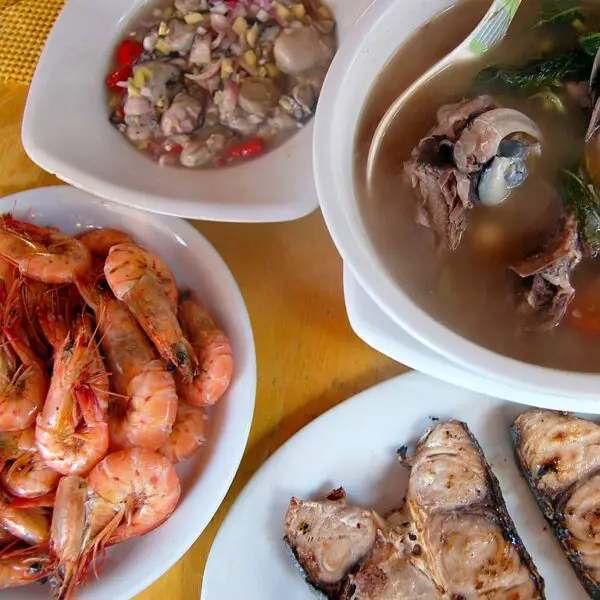
When it comes to Filipino cuisine, ulam combos are an essential part of the dining experience. These delicious pairings bring together different flavors, textures, and ingredients to create a satisfying meal. Whether you’re a house husband looking for new dishes to impress your family or a parent trying to please picky eaters, these ulam combos
-
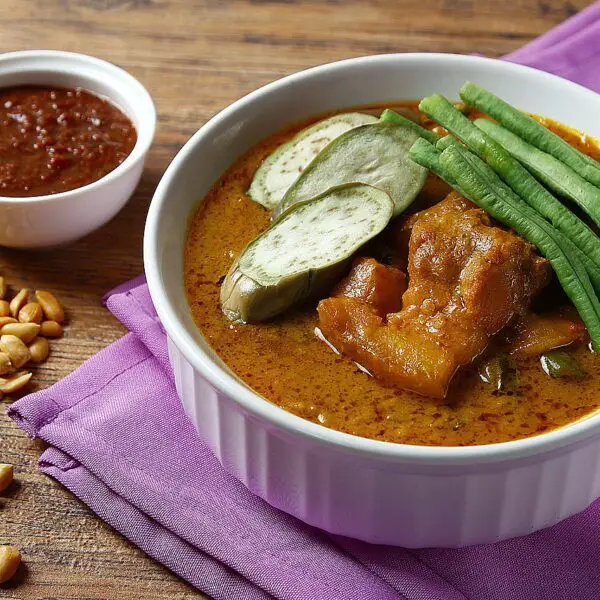
Welcome to our authentic Kare-Kare recipe, where we take you on a flavorful journey through the rich culinary heritage of the Philippines. Kare-Kare is a beloved Filipino dish known for its delectable oxtail stew, combining tender oxtail with a luscious peanut sauce and a medley of vegetables. In this article, we will guide you through
-
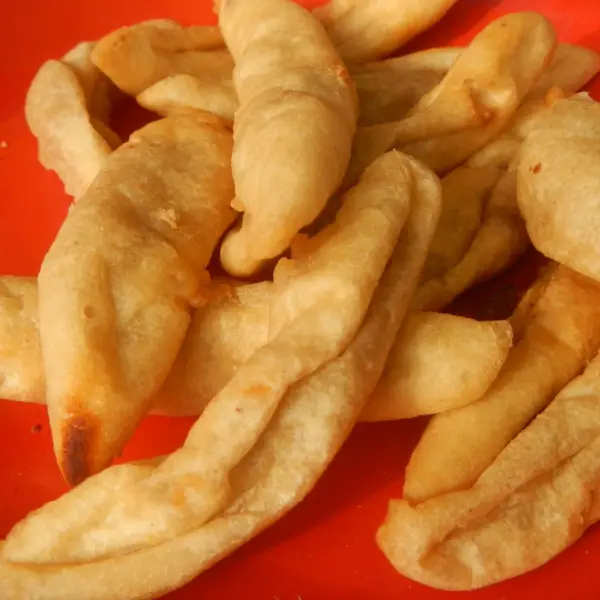
Welcome to our authentic kikiam recipe guide! If you’re a fan of Filipino snacks, you’re in for a treat. Kikiam is a popular street food in the Philippines, loved for its delicious flavor and quick preparation. In this article, we’ll walk you through the steps to make this delectable snack at home, so you
-

Welcome to our guide on how to make an authentic Yang Chow Fried Rice! This classic Chinese dish is loved for its flavorful combination of ingredients and delightful textures. Whether you’re new to the kitchen or an experienced chef, we’ve got you covered with our step-by-step recipe and helpful tips to ensure your Yang Chow
-
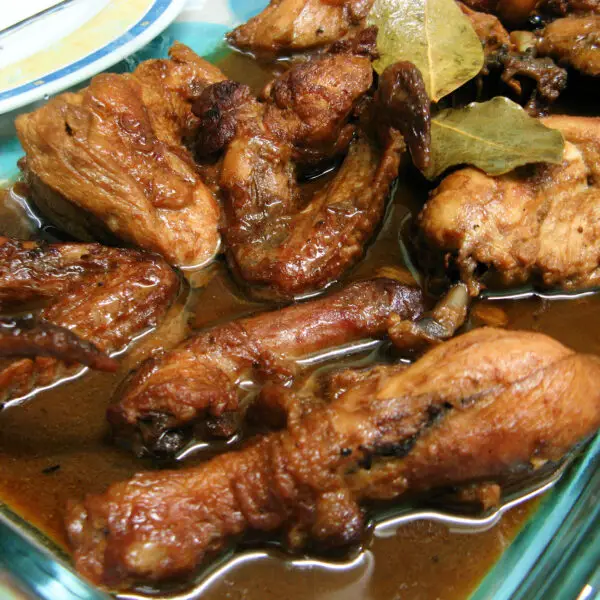
Welcome to our ultimate guide to authentic Filipino Adobo! Whether you’re a fan of Filipino cuisine or looking to explore new flavors, this article will provide you with a traditional Filipino Adobo recipe and valuable cooking tips to help you create the perfect dish in your own kitchen. Filipino Adobo is a beloved national dish
-

Welcome to our comprehensive guide on Sinigang, the beloved and classic Filipino soup that is known for its tangy and savory flavors. In this article, we will delve into the cultural significance of Sinigang, explore its base ingredients, and regional variations, and provide you with a step-by-step recipe for cooking Sinigang na Baboy (Pork Sinigang).
-

Enjoy the delicious fusion tastes on Jollibee’s 2023 breakfast menu for a filling and tasty start to the day.
-

Lapu Lapu Fish, also known as grouper, is a popular Filipino fish often prepared for special occasions and holidays. It is a versatile fish that can be cooked using various techniques and paired with different ingredients to create delicious recipes. Steamed Lapu Lapu Recipe for Christmas Noche Buena Steamed Lapu Lapu is a classic dish
-
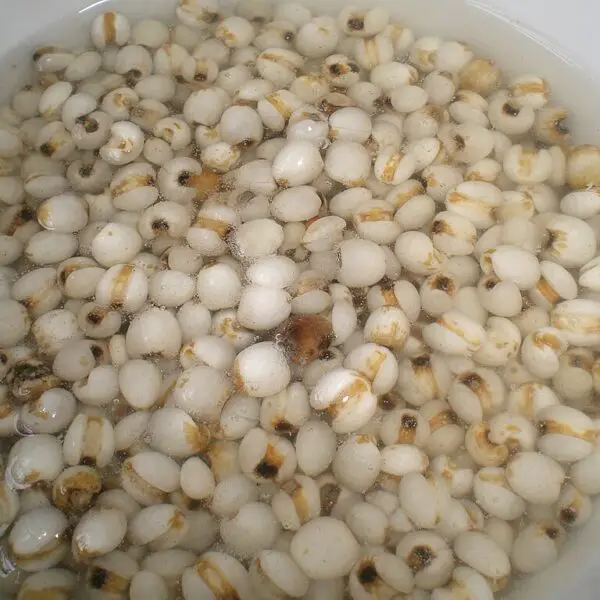
Adlai rice, also known as “Job’s Tears,” is a low-carbohydrate and calorie-rich grain that serves as a nutritious and versatile alternative to rice. It is becoming increasingly popular as a healthier option for individuals looking to reduce their carbohydrate intake. Key Takeaways: The Health Benefits of Adlai Rice Adlai rice, also known as “Job’s tears,”
-

Napoleones is a beloved delicacy hailing from Bacolod, Philippines. With its layers of buttery puff pastry, creamy custard filling, and sugary glaze, it has become a sought-after treat for locals and tourists alike. If you’re wondering where to buy the best Napoleones in the Philippines, we’ve got you covered. Whether you’re in Metro Manila or
-

SM Mall of Asia, located in Manila, Philippines, is not only a renowned shopping and entertainment destination but also a haven for food enthusiasts. With a wide array of dining options available, it can be challenging to decide where to indulge in a memorable meal. That’s why we’ve curated a list of the top 10
-

When it comes to indulging in the best flavors of Japan in Manila, Japanese cheesecakes are a favorite choice. These light and fluffy treats are popular for their delicate texture and rich flavors. This article has curated a list of the top 8 Japanese cheesecake shops in Manila that you must try. From signature creations
